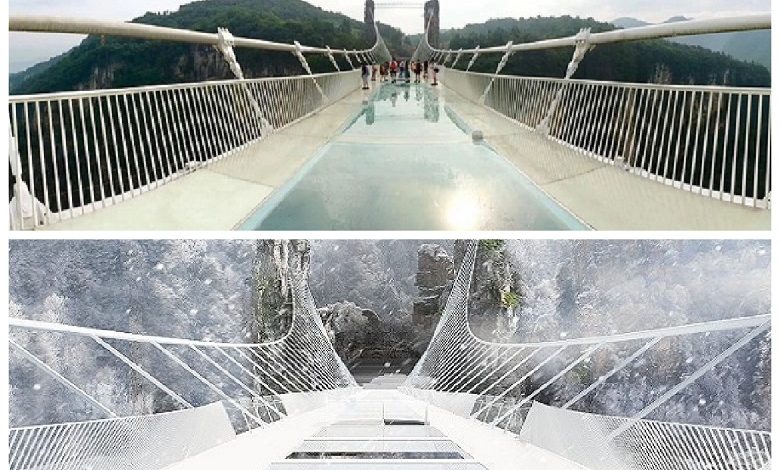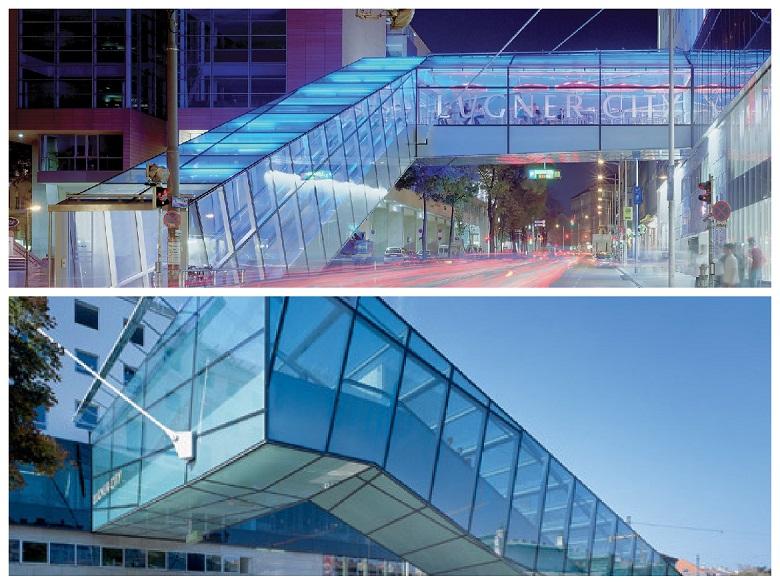Why China’s famous glass bridges are closed: history of transparent architecture

A person, in his/her striving for beauty, often tries to combine the incongruous. Transparent structures floating in the sky give us a unique feeling of freedom, but at the same time, no one wants to compromise the main thing – safety.
A little over 150 years ago, the first large building with transparent walls was built. About many years ago, the first glass bridge was created in China, and over the years, in pursuit of tourists in the Middle Kingdom, several thousand such sights have been built. However, recently the country’s authorities began to close popular attractions massively.
The path of glass in architecture has been a long one: for several hundred years, from tiny transparent pieces that were inserted into the walls for the sake of grains of light, we came to glass skyscrapers in which it seems that the sky is near. The first significant milestone on this challenging path was the “Crystal Palace”, built-in 1851 in London specifically for the First World Industrial Exhibition.
In principle, the building provided a vast greenhouse – it was built according to the same principles from wooden frames, sheet glass, iron beams and cast iron support posts and was not very expensive. After a couple of years, the structure was dismantled and moved to a new location in the southeast region of London. The palace gave its name to the adjacent South London area, the train station, the television tower complex and the Crystal Palace football club.
Glass architecture was able to leap greenhouses to residential buildings only in the 20th century, when, with the help of science, builders received new materials: laminated, tempered glass and high-quality flat glass. Soon they began to be used as materials for supporting structures.
The path over the abyss

Transparent bridges have become a logical apotheosis of the desire for freedom that glass gives a person. The constructions, moving along which you can feel yourself hovering over an abyss, pretty tickle your nerves, but this is precisely what attracts them. After 2005, a real boom in such structures began in the world. The Lugner Bridge in Vienna, the “Sky Trail” over the Grand Canyon in Arizona and the pedestrian section over the Tower Bridge in London have shown the whole world that it is possible and necessary to build transparent structures in the air.

China became the undoubted champion in the construction of glass bridges. In less than ten years, 2,300 transparent bridges have appeared in the PRC, as well as countless “walking paths” and sites. There is also an undoubted record holder, the Zhangjiajie Glass Bridge – the longest and highest in the world.
In 2016, it set ten world records at once, covering its design and construction. The structure is 430 meters long and 6 meters wide, suspended 300 meters above the ground. It can simultaneously accommodate 800 visitors at a time.
And for those who no longer tickle the nerves of ordinary “invisible” bridges. For example, transparent slides or paths over an abyss, on which tourists are frightened with special effects: artificial cracks on the glass that appear right under their feet can bring any brave man to a heart attack.
Dangerous entertainment
However, at the end of 2019, the Chinese government came to an unpleasant decision – is urgently needed to check all the bridges and put at least some order in the popular and profitable business. In China’s Hebei province, all 32 glass structures were closed for security checks, and unfinished projects were frozen. The emergency measures were caused by several accidents.
It turned out that there were always problems with glass bridges and platforms, but for obvious reasons, they tried not to advertise them. So, in 2015, glass cracked on one of the sections of the observation deck in Henan province. This happened about two weeks after its opening. The local authorities then explained the incident because one of the tourists dropped a heavy thermo- mug on the panel. In 2016, visitors to the Zhangjiajie Glass Bridge were hit by falling debris.
In June 2019, a visitor to a glass slide in Guangxi province was killed. Rolling down from a 300-meter height, tourists had to break with their hands in particular gloves, but the unexpected rain made the surface too slippery, and the extreme flew off the track, gaining too high speed. The enormous height of such structures makes any oversight fatal.
In 2019, the Zhangjiajie Bridge record was broken by a new 500-meter giant in Jiangsu province in eastern China. Still, the unique attraction had to be closed a week after the grand opening due to an accident. The man slipped on the glass, wet after the rain, broke the fence and fell from a height.
After this incident, the PRC government finally became concerned about the safety of tourists on the glass bridges. In the first days of the inspection, it turned out that China still does not have general standards and requirements for the construction and operation of such facilities. Many of them were generally built in a hurry to fulfil the plan on time and meet the deadlines (unfortunately, too well known to our practice).
About a year has passed since local, provincial authorities ordered to inspect all “aerial attractions”. However, this is not an easy task because, as they say, the figure of 2300 units is only official data, and there are also unregistered glass bridges and platforms. Hopefully, the PRC will put things in order, modernize dangerous structures, and introduce new quality standards in the country. Most likely, those of the bridges that now receive visitors have already passed such a test.




